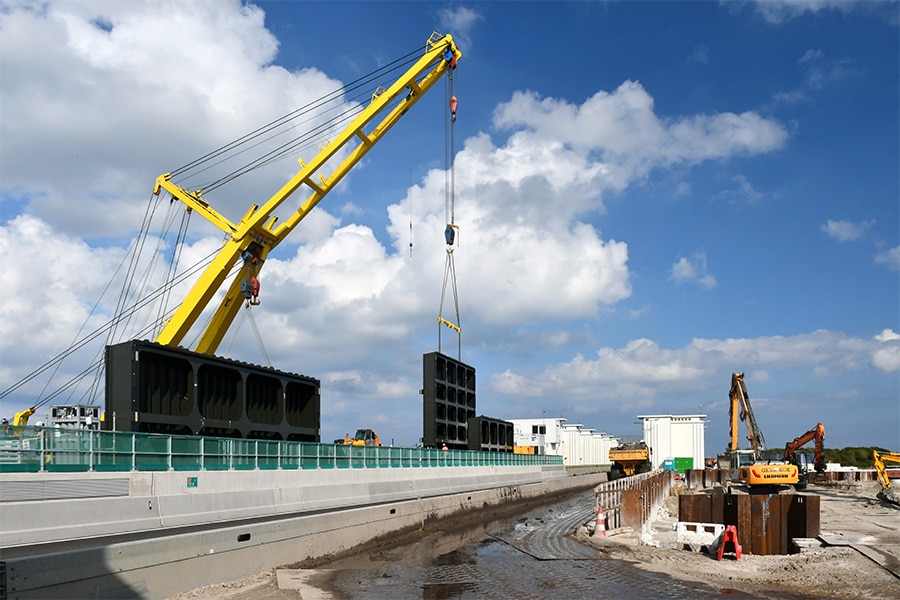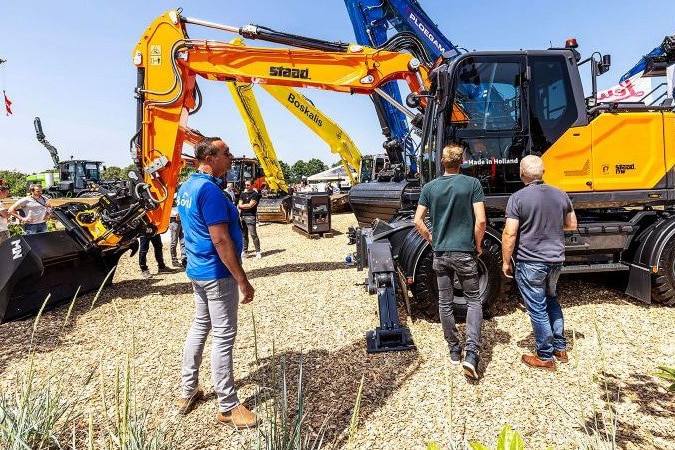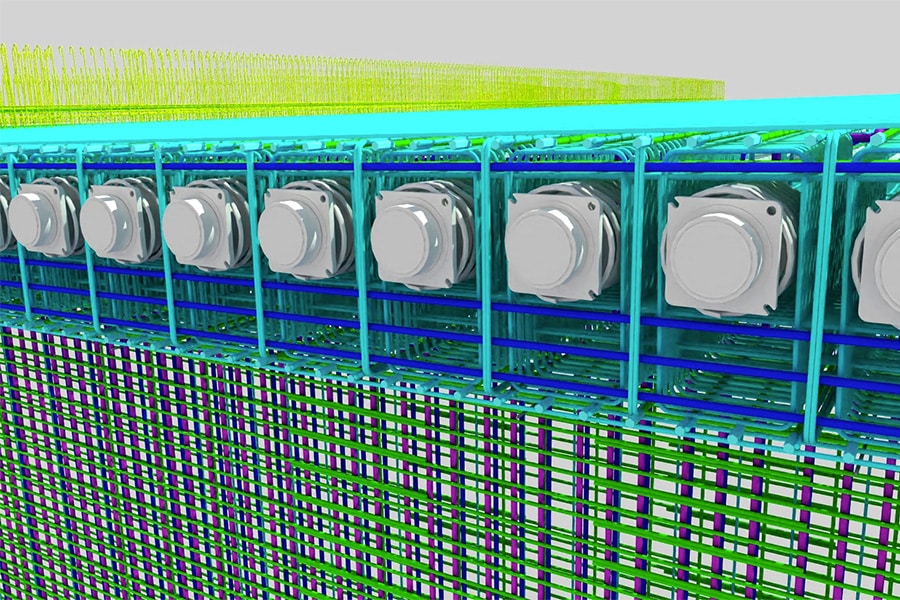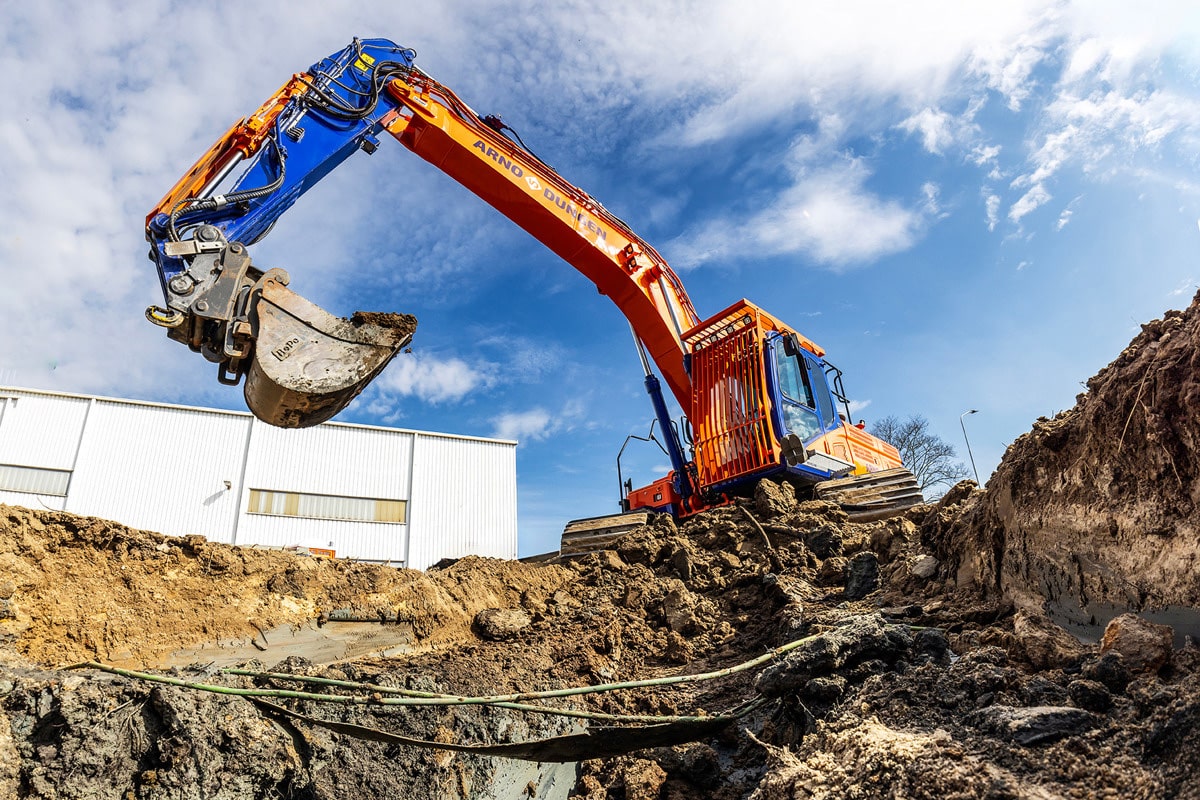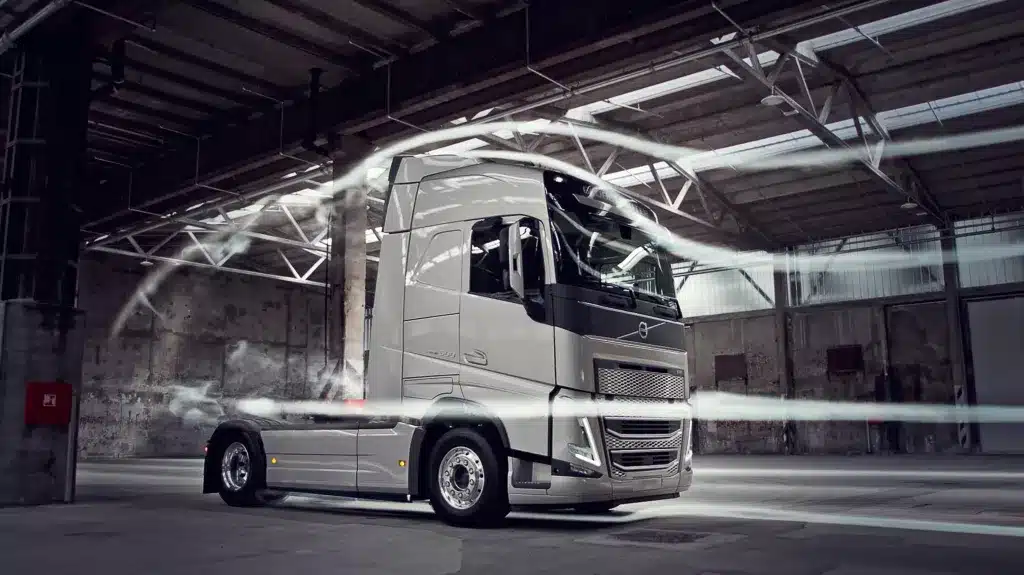
How do I choose the right aerodynamic options for my operations?
Significant fuel savings can be achieved with the right aerodynamics on trucks. But how do you choose the right aerodynamics for your operations? Read more about it here.
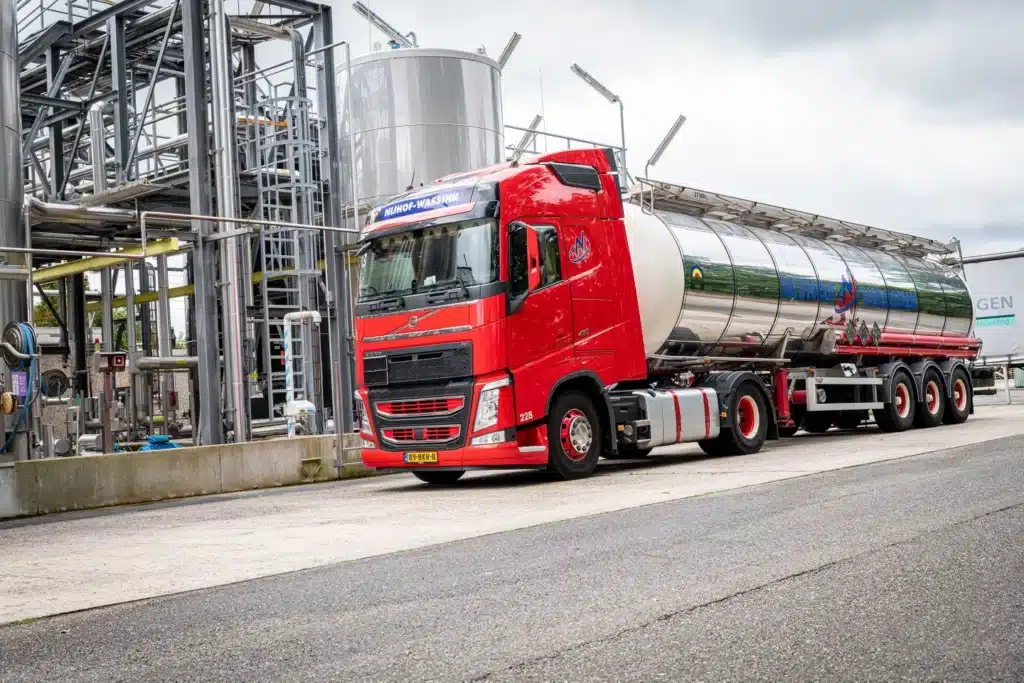
Installing aerodynamic features can save up to 10%* in fuel consumption on a typical long-haul route. But it is not just long-haul trucks with standard trailer configurations that can benefit from appropriate aerodynamic specifications. Significant fuel savings can also be achieved in other segments, including tank transport and in the construction segment, with the right aerodynamics.
Aerodynamics play a crucial role in the design of a truck cab. However, it is also possible to add or retrofit a vehicle with features to minimize drag and subsequently reduce fuel consumption and CO2 emissions. Below are some features to reduce drag and thus save fuel.
Roof spoilers
When mounted correctly, the roof spoiler will provide the greatest fuel savings of all aerodynamics. Without a spoiler, the non-aerodynamic structures of the cargo box are exposed to airflow. The higher the truck, the greater the drag. The roof angle is also important. Adding a roof spoiler can save as little as 5% of fuel at 80-90 km/h. However, it is extremely important to adjust it correctly to the height of the vehicle. Even a few inches too low or too high will reduce your potential savings. In the digital driver's manual you will find detailed instructions for setting up the roof spoiler for your specific truck configuration. It may be a small effort to do it, but the potential savings are really worth it.
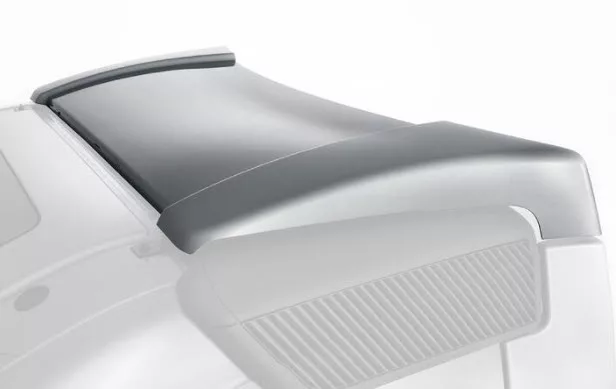
Side spoilers or side fenders
They are specially designed for each cab type and are especially suitable for tractor-trailers but also useful for bucket trucks to fill the space between the cab and cargo box. They help facilitate airflow from the cab around the sides of the trailer, reducing the amount of turbulence between them. Side skirts can also help save fuel and are very important at higher speeds especially in crosswinds.
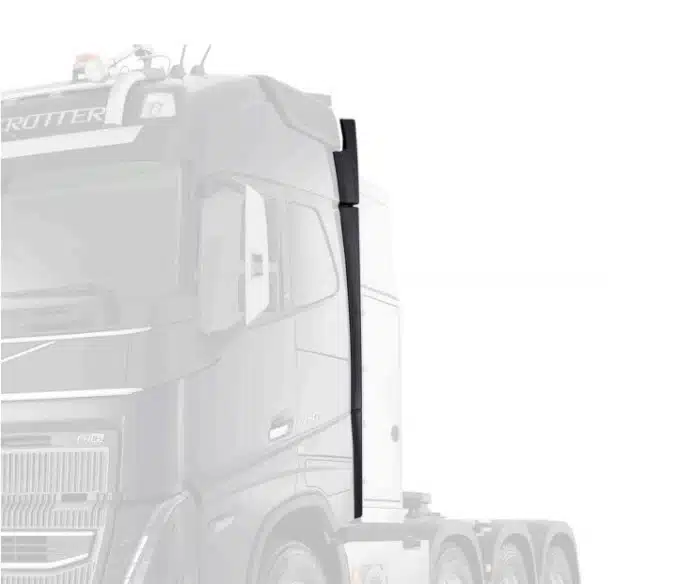
Chassis skirts
Chassis skirts cover the non-aerodynamic components that sit on the side of the truck. They eliminate openings, reduce drag and lower fuel consumption. The chassis skirts can also be fitted with top and bottom rubber extensions. This further closes the space between trailer and skirt and road surface and skirt.
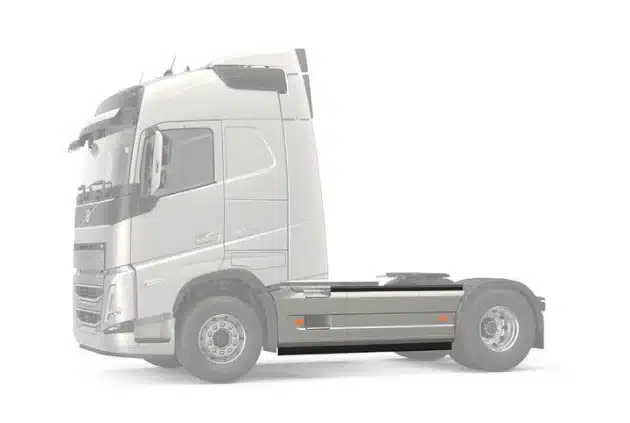
Front fender extensions
These further cover the gap between the front wheels and the surrounding bodywork to ensure that swirling and turbulent airflow in and around the front fenders has a minimal impact on external airflow. The correct type depends on the height and width of the tire on the front axle you choose for your truck.
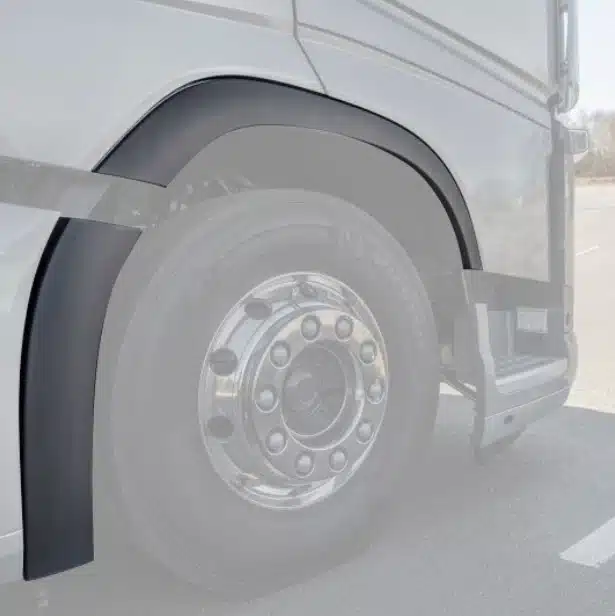
Bumper spoilers
The bumper spoiler is mounted under the bumper to act as an air deflector and redirect airflow from the front wheels and the non-aerodynamic underside of the truck and trailer.
There are also other measures you can take to improve the aerodynamics of your combination, such as keeping the distance between the trailer and the cab as small as possible. A trailer with closed and smooth sidewalls will have lower fuel consumption than an open trailer, for example. In addition, closed chassis skirts, a sloping roofline or aerodynamic extensions at the rear help to further improve the streamline.
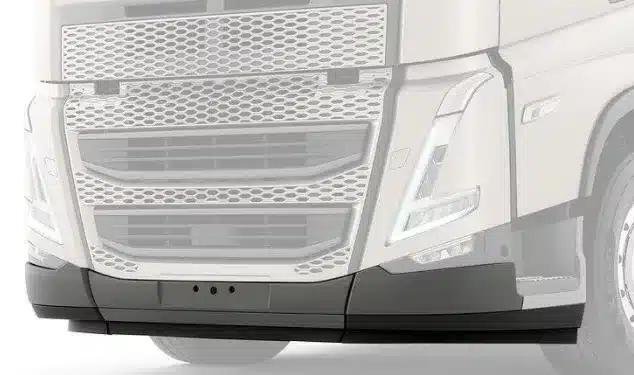
Aerodynamics and speed
The use of additional aerodynamic features is generally the norm in the long-distance segment. This is because drag increases progressively with speed. As a rule of thumb, drag quadruples when you double your speed. While most deployment segments can benefit from aerodynamic modifications, the route, average speed and weight of the combination must be taken into account. There are segments where they are often overlooked for no reason, such as in the tank transport, tipper transport and in the construction segment. In these applications, simulations typically prove that with proper aerodynamics, a significant amount of fuel can be saved even when the body is lower than the truck. This is because the shape of the cab itself is unable to effectively direct oncoming air over and past the trailer. Spoilers are designed for this purpose and are equally important in these segments.
Weight versus payload
Finally, it is worth remembering that in some segments, such as tank transport, the right balance is being sought between the extra weight of aerodynamic features (and the benefits they provide) and the highest possible payload.
